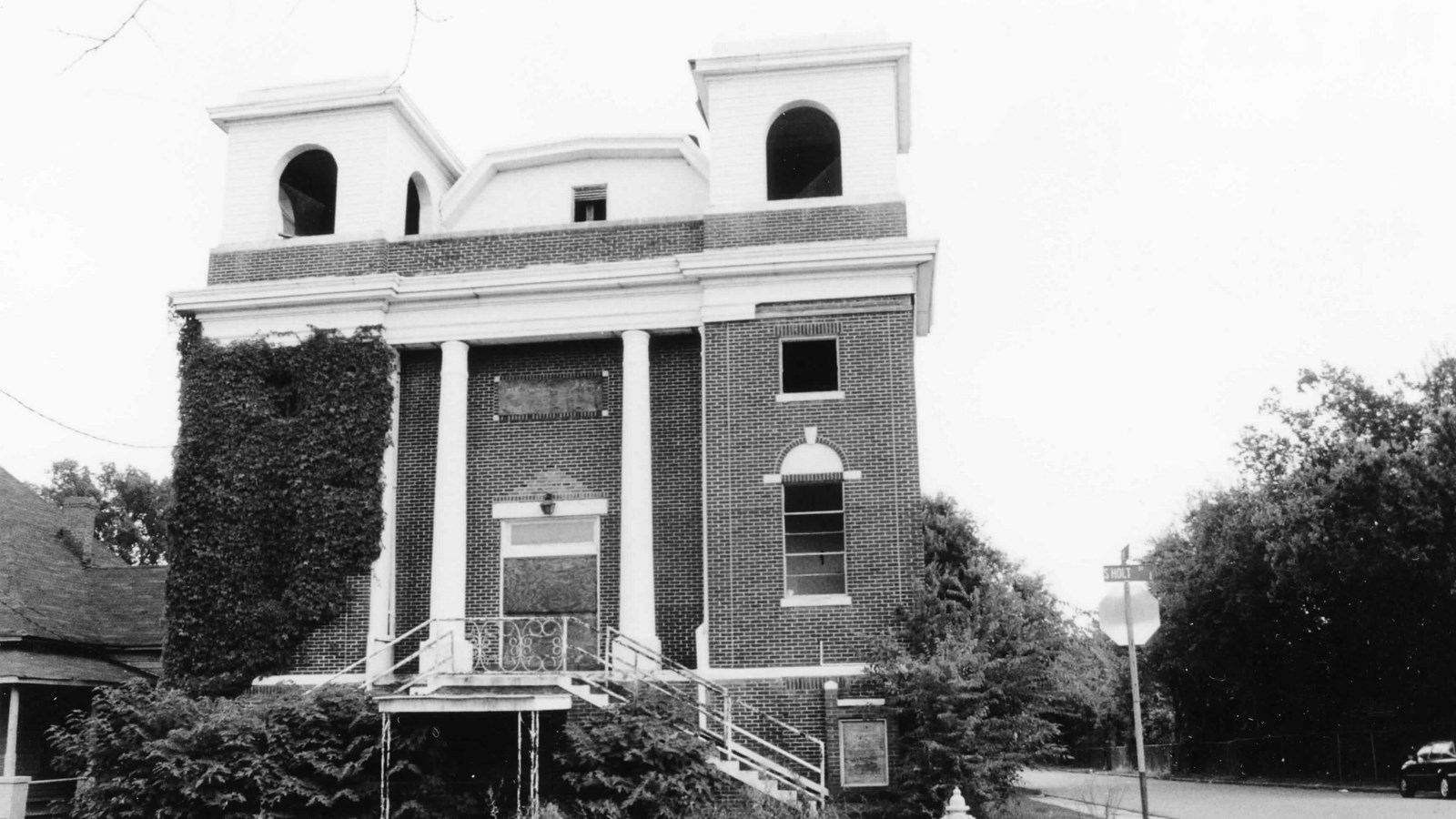Last updated: December 1, 2023
Place
Mt. Zion AME Zion Church

Photograph by Christy Anderson, courtesy of the Alabama State Historic Preservation Office
Quick Facts
Location:
467 Holt St., Montgomery, Alabama
Significance:
Ethnic Heritage (Black), Politics/Government
Designation:
Listed in the National Register - Reference number 02001066
OPEN TO PUBLIC:
No
MANAGED BY:
Mount Zion Center Foundation
The Mt. Zion AME Zion Church in Montgomery, Alabama, was listed in the National Register of Historic Places in 2002. The church and its congregation are significant for their role in the civil rights movement, including forming the Montgomery Improvement Association and leading the Montgomery bus boycott.
On December 1, 1955, Rosa Parks refused to give up her bus seat for white passengers, in violation of a Montgomery city ordinance. She was arrested and fined. Montgomery's Black community, who made up approximately 75% of bus passengers in the city, worked quickly to respond and fight the segregation ordinance. The very next day, Black ministers across the city announced a bus boycott, to commence on Monday, December 5.
On the first afternoon of the boycott, the ministers and other leaders gathered at the Mt. Zion AME Zion Church to form an organization to coordinate the boycott. The organization was christened as the Montgomery Improvement Association (MIA), and the group elected 26-year-old Martin Luther King, Jr. as their president. Reverend L. Roy Bennett, the pastor of Mt. Zion, was elected vice-president.
For over a year, the MIA ensured the success of the boycott. They arranged alternative forms of transportation for boycotters, gathered funds from civil rights organizations across the country, negotiated with city officials, and launched legal cases against the ordinance. On December 20, 1956, the Supreme Court of the United States ruled that any law requiring racially segregated seating on buses violated the 14th Amendment. The boycott ended the next day.
Nearly a decade later, the church provided refreshments and shelter to protestors marching from Selma to Montgomery, in hopes of securing voting rights. While the original church building has been vacant since 1990, the Mt. Zion AME congregation continues to exist in Montgomery. The property has been the recipient of multiple grants from the National Park Service, with plans to turn the church into a museum commemorating the civil rights movement.
On December 1, 1955, Rosa Parks refused to give up her bus seat for white passengers, in violation of a Montgomery city ordinance. She was arrested and fined. Montgomery's Black community, who made up approximately 75% of bus passengers in the city, worked quickly to respond and fight the segregation ordinance. The very next day, Black ministers across the city announced a bus boycott, to commence on Monday, December 5.
On the first afternoon of the boycott, the ministers and other leaders gathered at the Mt. Zion AME Zion Church to form an organization to coordinate the boycott. The organization was christened as the Montgomery Improvement Association (MIA), and the group elected 26-year-old Martin Luther King, Jr. as their president. Reverend L. Roy Bennett, the pastor of Mt. Zion, was elected vice-president.
For over a year, the MIA ensured the success of the boycott. They arranged alternative forms of transportation for boycotters, gathered funds from civil rights organizations across the country, negotiated with city officials, and launched legal cases against the ordinance. On December 20, 1956, the Supreme Court of the United States ruled that any law requiring racially segregated seating on buses violated the 14th Amendment. The boycott ended the next day.
Nearly a decade later, the church provided refreshments and shelter to protestors marching from Selma to Montgomery, in hopes of securing voting rights. While the original church building has been vacant since 1990, the Mt. Zion AME congregation continues to exist in Montgomery. The property has been the recipient of multiple grants from the National Park Service, with plans to turn the church into a museum commemorating the civil rights movement.
